Ants are one of the most plentiful animals on the planet. There are more than 10 quintillion individual ants. What eats ants? If you’re tired of being overrun by ants in your yard, this list of animals that eat ants might help. Attract ant predators and you’ll have fewer ants.
Animals that eat ants include antbirds, anteaters, antlions, and even other ants. Birds like robins and woodpeckers love a good feed of ants. Many mammals also eat ants, including bears, lizards, toads, and even humans. Some of these animals seek out ants, making a large portion of their diet.
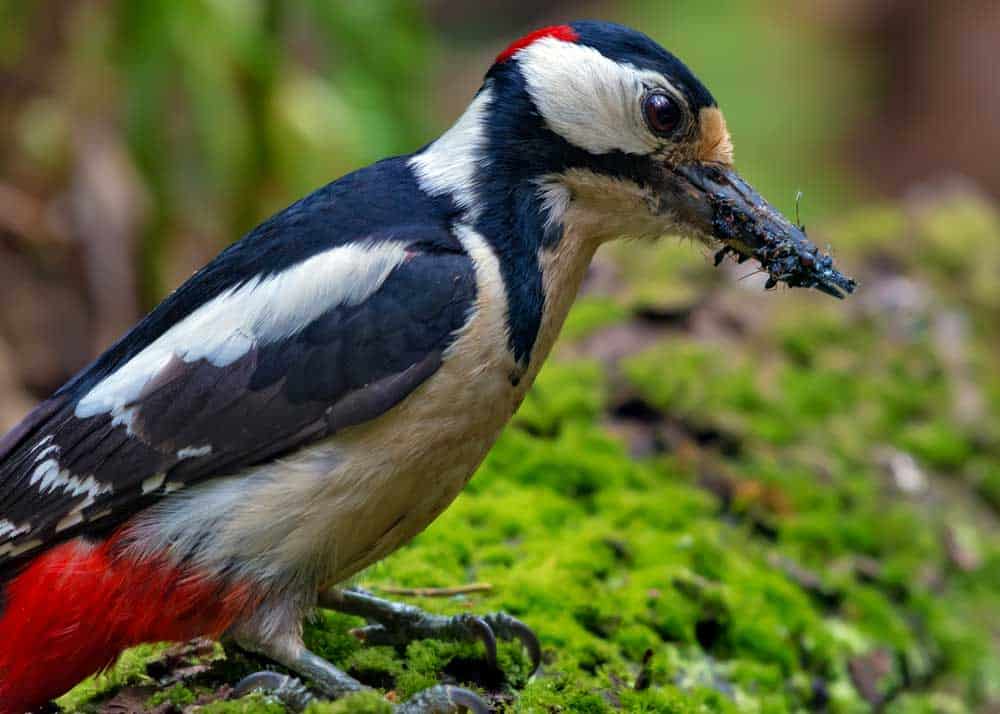
Given that ants are on the menu for so many animals, it’s a good thing that there are some 10 quintillion (billion billion) ants on earth!
Ants often build nests and colonies below the surface of the ground. You might see these little bugs marching through your home because they found a food source and want to take it home.
Thanks to the animals that eat ants, you can learn how to control these insects around your home and yard. These animals include reptiles and birds, along with some mammals.
Table of Contents
What Eats Ants?
There are animals on every continent (except Antarctica) that eat ants. They include mammals, birds, insects, and reptiles.
You might be surprised to learn that humans and ants also make this list of ant-eaters.
Surprisingly, there are no ants in Antarctica, despite its name.
What is Eating Ants Called?
The feeding behavior of eating ants (or termites) is called myrmecophagy.
Myrmecophagy comes from ancient Greek. Murmēx (ants) and phagein (to eat).
Animals That Specialize in Eating Ants
Many animals specialize in eating ants.
Here are some eaters of ants with the name “ant” in their own name.
- Antlion (insect)
- Antbird (bird)
- Antthrushes (bird)
- Antpittas (bird)
- Anteater (mammal)
- Other ants (insect)
More on each of these animals is below.
Okay, now on to the list. What animals eat ants? Here are 28, organized by mammals, birds, insects and spiders, reptiles, and amphibians.
7 Mammals that Eat Ants
Aardvarks
Aardvarks look similar to anteaters and eat the same bugs. They have short and squat bodies with long claws.
When they find an anthill, the aardvark uses its claws to dig into the ground and create enough space for its snout, which it places in the hill. They also have a long tongue with a sticky coating that helps them pull out the ants and eat them whole.
Aardvarks are native to Africa and related to elephants.
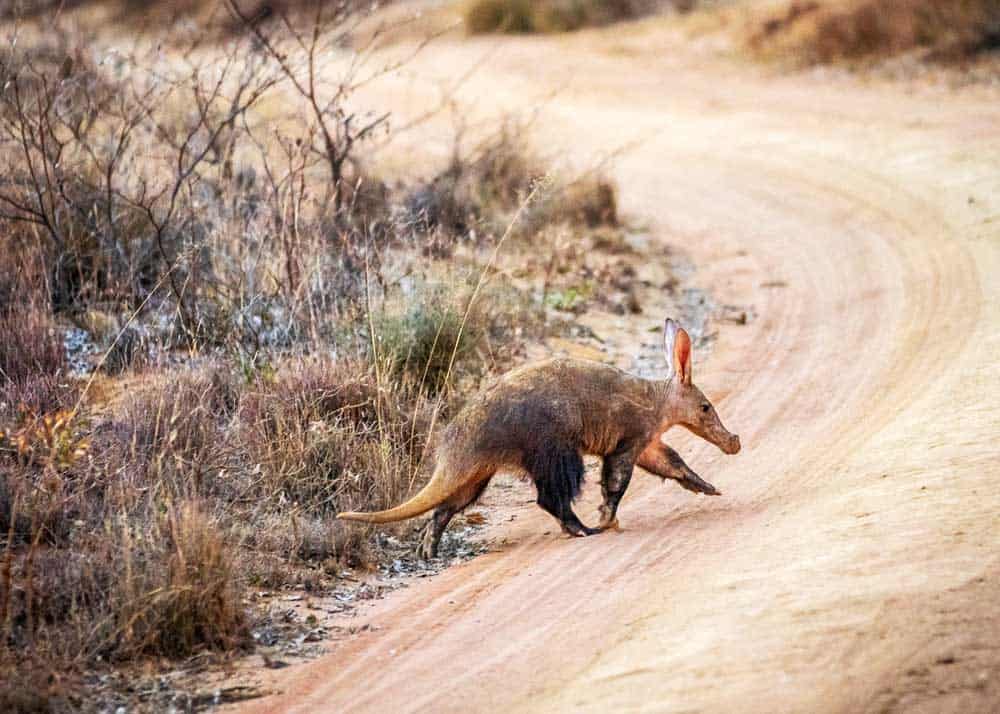
Anteaters
The most common animal that eats ants is the anteater. This animal is native to both South America and Central America. It has a long snout/nose with a long tongue tucked inside.
When an anteater comes across an anthill, it places its snout inside the hill and uses its tongue to quickly pull out and swallow the bugs.
A single anteater can wipe out an entire hill in a few minutes.
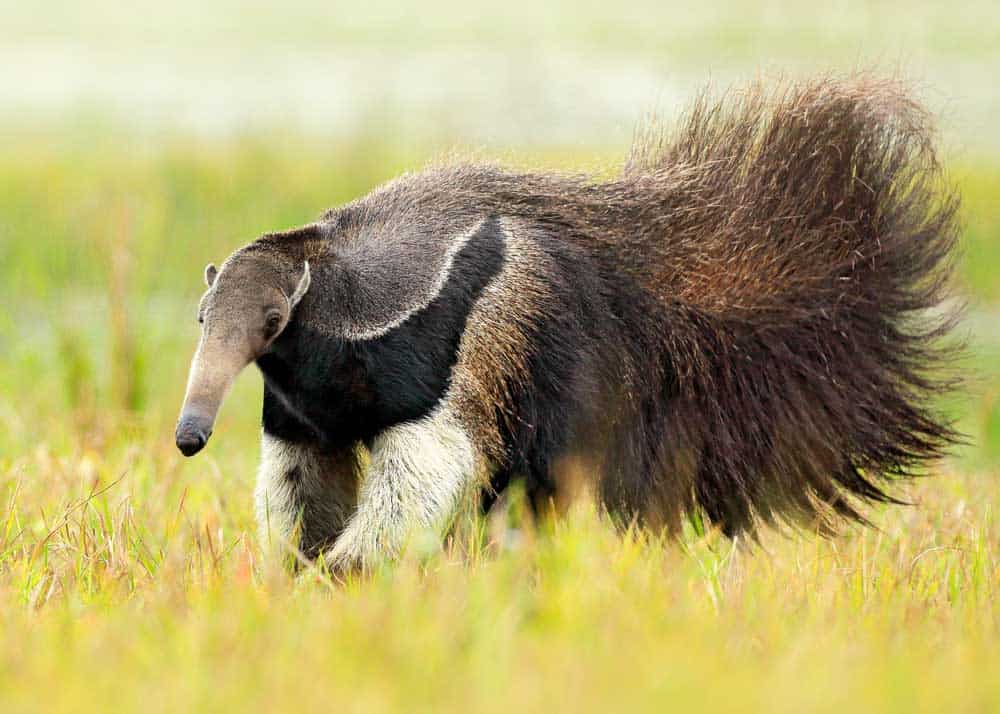
Pangolins
You might recognize a pangolin as an adorable creature covered in hard and thick scales. The animal became famous in 2019 as people brought attention to the illegal trade of them and the false claim that they were somehow responsible for the spread of COVID.
Often found in Asia and Africa, pangolins survive on both termites and ants.
They can use both their tails and claws to pull bark off trees to look for ants and to get deep into the ground to find the bugs.
Here’s more about pangolins.
Coyotes
Though coyotes often eat meat such as deer and birds, they’ll also eat anything else, including berries and other fruits.
Coyotes are not natural predators of ants but will eat them if they can’t find enough rodents. You’ll find coyotes in locations across the country.
Black Bears
Black bears are North American bears that can eat ants. According to Shubenacadie Wildlife Park, black bears eat high volumes of ants, including ant larvae.
Black bears eat tremendous daily amounts of vegetation (fruits, nuts and berries), insects (ant larvae, bee larvae and grubs are favourites), small mammals, eggs, insects and carrion in order to amass the reserves of body fat that will sustain them through the winter months.
Shubenacadie Wildlife Park
As with other mammals, they will also consume the ants along with other foods. For example, a bear might eat ants inside a beehive. Black bears may eat ants clinging to berries and other vegetation, too.
Sloth Bears
Sloth bears get their name because they tend to move slowly as sloths do but are part of the bear family. Unlike other large animals that eat ants and have long snouts, these bears have short and squat noses.
They use their big claws to dig through the ground to reach an ant colony and then scoop up the ants, eating them off their paws.
Sloth bears usually live in Sri Lanka and Nepal but occasionally live in India. Here’s more about what bears eat.
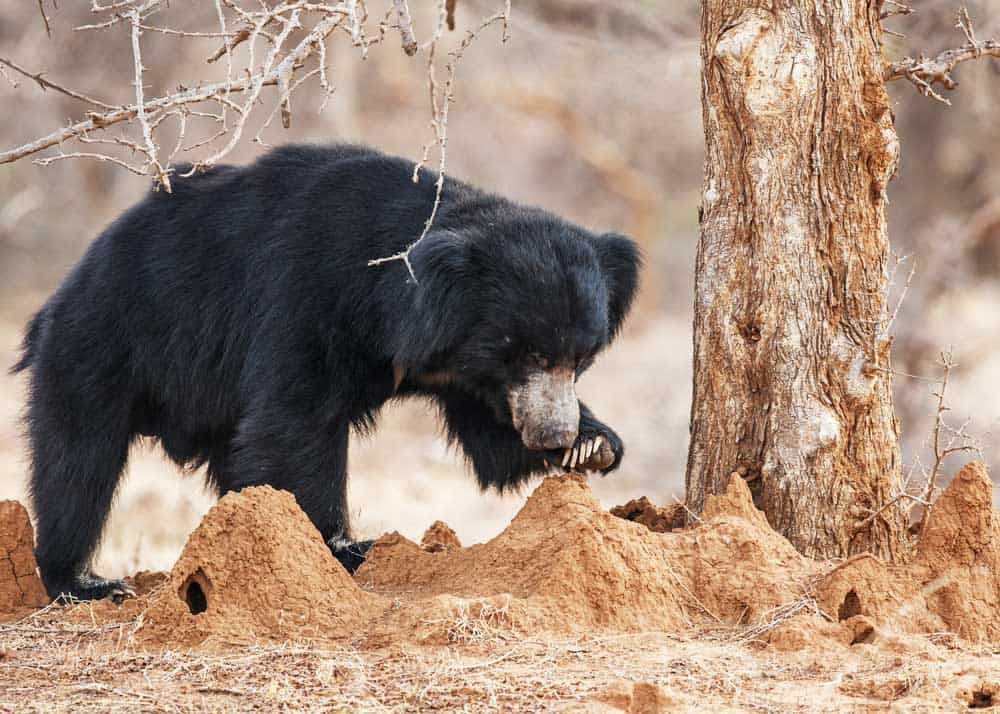
Humans
Humans are fans of ants and commonly eat versions that include black ants and weaver ants. Ant eating is popular in both parts of India and Mexico.
Humans use bugs in sweet and savory dishes like stews and candy. You can even buy chocolate-covered ants in some stores.
This shouldn’t come as a surprise. 80 percent of the global population eats insects as a regular part of their diet.
8 Birds that Eat Ants
Antbirds
There are more than 200 types of antbirds that live in Central America and South America. These birds primarily live on small insects such as ants and termites.
Their long beaks help them catch insects on tree branches and off the ground, which they swallow whole. Antbirds can also use their long beaks to get into an anthill and pull out ants.
Antpittas
Antpittas are small birds found in both South America and North America. They are similar to antbirds and have long legs and short tails.
Their bright colors help them blend with their surrounding environment and keep ants from spotting them.
These birds can easily pull ants from their hills or snatch them off the ground.
Robins
Robins use a method called passive hunting to find and eat ants.
This type of bird will sit on an anthill and place both of its wings on the surface and sit back on its tail to hide from the ants. Robins will then rub on their wings to encourage ants to come out of the hill.
Once the ants come out, the robin will swallow them.
Ravens
Ravens also use passive hunting to eat ants in the same way that robins do. When the raven finds an anthill, it takes a seat and uses its wings to force the bugs out of its home.
This causes the ants to climb onto the bird’s wings and roam around its body. The raven can quickly find and consume dozens of ants through this method.
Woodpeckers
Woodpeckers are different from ravens and robins in that they use active hunting to catch ants. While the bird sits in a tree, it places one of its wings on the ground and waits for an ant to crawl on it.
It then slowly moves and shakes its wing to force the ant up and into its mouth. Woodpeckers often eat one ant at a time.
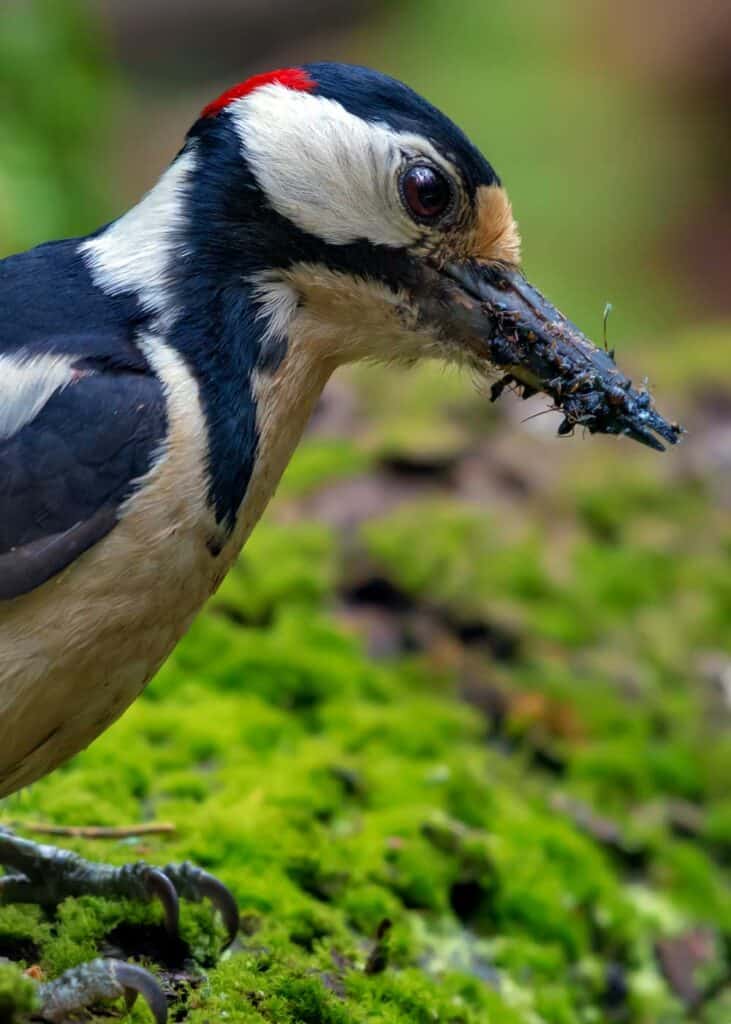
More Reading: 4 Types of Sugar Ants (How to Get Rid of Them)
Brahminy Kites
Brahminy Kites are birds found in Asia and Australia that use anting or active hunting to find ants.
They can hunt in small groups to gather more bugs at a time or on their own, which limits them to one ant at a time. The birds use their wings to transfer ants from hills to their mouths.
From the outside, it appears as if they are cleaning their wings.
Flickers
Flickers are part of the woodpecker family and live in North America and South America. As active hunters, they seek out ants and catch them instead of sitting back and trying to get as many insects as possible.
Unlike woodpeckers that focus on trees, flickers catch ants as they make their way back to their hills.
Their long beaks also help them pull ants from those hills.
Sparrows
Europeans brought sparrows to North America and saw them spread to other parts of the world.
Sparrows prefer a herbivore diet and usually eat plants or wild grains. But they will eat ants if they have the chance. Unlike other birds that hunt from trees or attack anthills, sparrows eat ants only if they find a large group.
More reading: Do Carpenter Ants Bite?
9 Insects and Spiders that Eat Ants
Antlions
Antlions refer to more than 2,000 insects that exclusively eat ants and similar bugs. They look for patches of loose soil and build small pits that ants fall into when they walk across the ground.
The antlion will stay in the bottom of the pit and eat the ants as they fall into their mouths.
Ants
One of the top predators of ants is other ants. Raider ants look for other nests and invade, taking any food they find. They can also take the larvae and eggs of those ants.
Raider ants then bring the food back to their own colonies, which they use to feed pregnant ants. One raid can produce enough food to cover the next life cycle.
Assassin Bugs
As the name implies, assassin bugs kill other insects and survive off them. Though they can eat different types of insects, they prefer ants.
The bug will find a spot close to the hill and cover its body in dead ants. It then uses its long mouth to inject venom into other ants that they eat.
Here’s a guide to assassin bugs.
Phorid Flies
Phorid flies use a unique way to catch ants. These insects seek a healthy ant that serves as a worker. The female will lay their eggs inside the ant and wait for them to hatch.
Once the eggs hatch, they eat the ant’s brain and then slowly take over the body, which they will live in until they grow too large.
Wolf Spiders
Among the insects that eat ants are wolf spiders, which get their name because they hunt similarly to how wolves do.
A wolf spider will track an ant at night and jump on it before using its fangs to inject enough venom to control the ant. The spider can then eat the ant and go back to hunting.
Wolf spiders also eat ticks, along with these other natural tick predators.
Learn more about how wolf spiders compare to brown recluse spiders.
Jumping Spiders
Jumping spiders are active hunters that eat both ants and other small bugs. The spider will follow the ant at night and release a dragline that attaches to the ant.
Jumping spiders can then use their venom to kill the ant before eating it. These spiders do not use silk or webs.
Caterpillars
You likely know caterpillars as the fuzzy and cute bugs that become butterflies.
Though caterpillars usually survive on vegetation and leaves that they chew and swallow, they can eat ants as well. This often happens when the ants are on the plants that the caterpillars consume.
Flies
Both adult and infant flies eat ants. Several types of female flies lay their eggs on living ants that then carry the eggs with them until they hatch.
The fly larvae can then eat the ant’s brain or its entire body.
Snails
Land snails usually survive on plants and other vegetation but can also eat a few ants. This is more common among larger types such as Roman snails.
They release a foaming mucus that repels ants. Snails do not seek out ants but will eat any left behind after an attack.
4 Reptiles & Amphibians that Eat Ants
Poison Dart Frogs
It is the steady diet of ants that provides the toxic alkaloids to the blue poison dart frog of Suriname.
It was thought that the frogs produced alkaloids. But a study from Proceedings of the National Academy of Sciences identifies that it is their insect diet, including a high volume of ants, that provides the toxins.
Horned Lizards
Horned lizards live in Central America and North America. You might hear people call them horned toads or horny toads. They have large scales on their backs and heads that give them their classic horned look.
Horned lizards have long tongues covered in a sticky substance that they can shoot into a hill to collect a lot of ants.
Blind Snakes
Though they are hard to spot as they coil into the size of a coin, blind snakes live worldwide. These snakes live underground and use their scent glands to track ants via the trails they leave behind.
Blind snakes follow those trails to locate a colony and will then eat all of the eggs they find.
One blind snake can consume an entire nest of eggs.
Narrow-Mouthed Toads
Found in both Asia and Africa as well as North America, this toad family includes 200 different species. They get their name because of their thin and tight mouth, which helps them track ants.
Narrow-mouthed toads use the eyes on their heads to track ants and use their long tongues to grab multiple ants and pull them into their mouths.
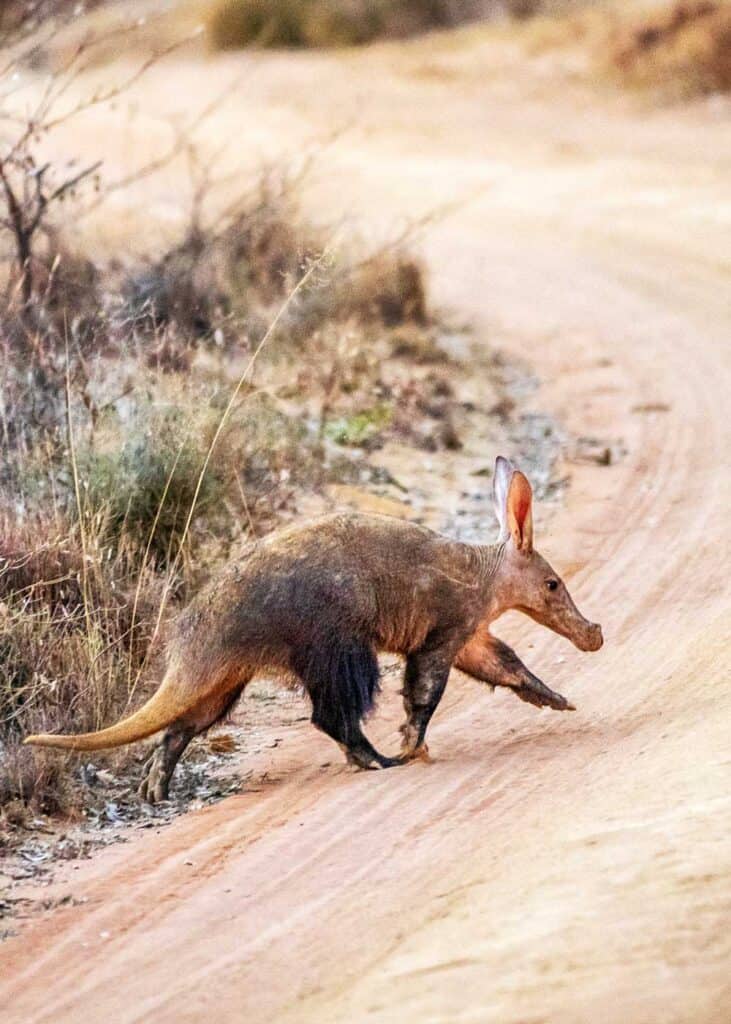
Keep learning about ants: Do flying ants bite?
FAQs About Ant Predators
Do Grasshoppers Eat Ants?
Grasshoppers are not predators of ants and do not eat them. Grasshoppers that are dying or injured can become victims of ant colonies.
Do Anteaters Eat Fire Ants?
Anteaters will eat fire ants in the wild. They use their long noses to get deep into an anthill and then pull the bugs up into their mouths.
Some have considered anteaters for fire ant control. But it is felt that they would only make a mess and not actually eliminate fire ant nests.
What Eats Army Ants?
Birds work with army ants, which flush out prey from different areas for the birds.
Mammals such as chimpanzees and certain types of birds will eat these ants.
Are There Spiders That Eat Ants?
Both jumping and wolf spiders are among the types that eat ants. Other spiders that eat ants include lynx and black widows.
Is it Safe to Eat Ants?
It is usually safe to eat ants as long as you avoid the poisonous types. Several companies sell edible and sterilized ants that are safe to consume.
Always confirm with an expert before popping a handful of ants in your mouth.
Can You Die from Eating Ants?
You should not become sick or die from eating ants unless you eat the wrong type.
Make sure that you avoid the poisonous varieties that include fire and black jumper ants.
Again, if you are unsure, ask before eating.
Do Hedgehogs Eat Ants?
Hedgehogs are omnivores who eat balanced diets, including ants. They often look for small insects when they need protein, including ants and beetles.
Do Bears Eat Ants?
Black and sloth bears are a few of the bears that eat ants.
Both species are adept at locating and consuming ants and ant larvae.
How Many Ants Are in the World?
There are 10 quintillion ants (10 billion billion) in the world, according to Jonathan Loh, Zoological Society of London.
In case you’re wondering, 10 quintillion looks like this: 10,000,000,000,000,000,000. That is 1019.
That means that there are 1,265,822,784 ants (1.2 billion) for every human. This is based on a global population of 7.9 billion people.
More reading: What eats mosquitoes?
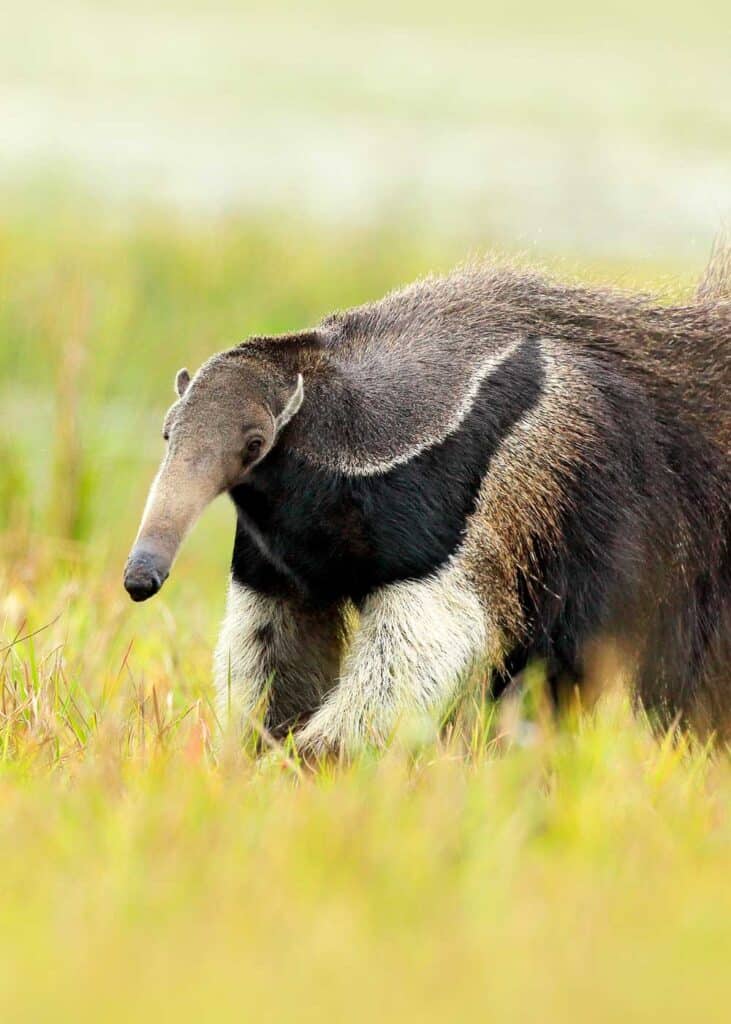
More reading: How to Get Rid of Carpenter Ants (12 Way) Kill and Prevent
Your Turn
Looking at the animals that eat ants is a good way to learn more about their natural predators.
These animals live in regions worldwide and include different types of mammals and birds, along with other insects such as spiders.
Have a species to add? Let me know below!
- About the Author
- Latest Posts
Bryan Haines is a co-founder and writer at The Buginator. And is working to make it the best resource for taking back the outdoors from biting, stinging pests.
He also blogs about travel at Storyteller.Travel and photography at Storyteller Tech. Bryan is a partner at Storyteller Media, a publishing company he runs with his wife, Dena.
